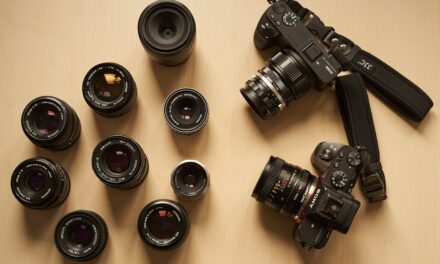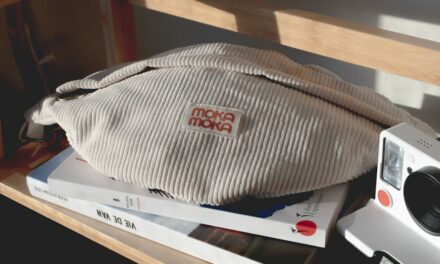Muddy colours are a common frustration for many artists, often arising from the unintentional mixing of pigments that leads to dull, lifeless hues. This phenomenon typically occurs when complementary colours are blended together, resulting in a neutralised tone that lacks vibrancy. For instance, mixing red and green or blue and orange can produce a muddy brown that fails to convey the intended emotional impact of a piece.
Understanding the causes of muddy colours is essential for artists seeking to maintain the integrity of their palette and achieve the desired visual effects in their work. The effects of muddy colours extend beyond mere aesthetics; they can significantly alter the mood and message of an artwork. A painting that is intended to evoke joy and energy may instead feel flat and uninspiring if muddiness creeps in.
Furthermore, muddy colours can detract from the overall composition, making it difficult for viewers to engage with the piece. Artists must be vigilant in their colour choices and mixing techniques to avoid this pitfall, ensuring that their work remains dynamic and expressive. By recognising the factors that contribute to muddy colours, artists can take proactive steps to preserve the clarity and vibrancy of their palettes.
Summary
- Muddy colors are caused by mixing too many colors, using low-quality pigments, or overworking the paint.
- Choose high-quality pigments with good lightfastness and transparency to achieve clean and vibrant colors.
- Use techniques such as layering and mixing paints on the palette to avoid muddiness and achieve the desired color.
- A limited palette with a few carefully chosen colors can help maintain color purity and prevent muddiness in your paintings.
- Proper brush and tool maintenance, such as cleaning and reshaping brushes, is essential for achieving clean and precise color application.
Choosing the Right Pigments for Clean Colors
Understanding Pigment Properties
Understanding these properties allows artists to make informed decisions about which colours to use together, minimising the risk of creating muddy tones. In addition to considering individual pigment properties, artists should also pay attention to colour harmony and relationships. Using a colour wheel can be an invaluable tool in this regard, helping artists identify complementary, analogous, and triadic colour schemes that work well together.
Creating a Cohesive Palette
By choosing pigments that are harmonious and compatible, artists can create a more cohesive palette that enhances the overall impact of their work.
The Importance of High-Quality Pigments
Techniques for Mixing and Layering Paints to Avoid Muddiness
The techniques employed in mixing and layering paints play a pivotal role in preventing muddiness. One effective method is to mix colours on a palette rather than directly on the canvas. This allows artists to control the proportions of each pigment more precisely, ensuring that they achieve the desired hue without inadvertently creating a muddy tone.
Additionally, artists should strive to mix only small amounts of paint at a time, as this encourages experimentation and reduces waste while allowing for adjustments as needed. Layering is another powerful technique that can help maintain colour purity. By applying thin layers of transparent or semi-transparent paint, artists can build depth and complexity without losing vibrancy.
This approach not only enhances the luminosity of colours but also allows for greater control over the final appearance of the artwork. When layering, it is essential to allow each layer to dry before applying the next; this prevents unwanted blending and ensures that each colour retains its integrity. By mastering these mixing and layering techniques, artists can create works that are rich in colour and free from muddiness.
Utilizing a Limited Palette to Maintain Color Purity
One effective strategy for avoiding muddy colours is to utilise a limited palette. By restricting the number of pigments used in a painting, artists can create a more harmonious colour scheme while reducing the likelihood of unintentional mixing that leads to muddiness. A limited palette encourages artists to explore the full potential of each colour, fostering creativity and innovation as they learn to mix secondary and tertiary hues from a smaller selection.
Moreover, a limited palette can enhance the overall cohesiveness of an artwork. When an artist uses fewer colours, there is a greater chance that those colours will relate to one another harmoniously, creating a unified visual experience for viewers. This approach also simplifies decision-making during the painting process, allowing artists to focus on composition and technique rather than becoming overwhelmed by an extensive array of choices.
Ultimately, utilising a limited palette not only helps prevent muddy colours but also encourages artistic growth and exploration.
Proper Brush and Tool Maintenance for Clean Colour Application
The maintenance of brushes and tools is often overlooked but is vital for achieving clean colour application. Dirty brushes can easily transfer residual pigments from previous sessions onto new layers of paint, leading to unwanted muddiness. Artists should develop a routine for cleaning their brushes thoroughly after each use, ensuring that no remnants of old paint remain.
This practice not only preserves the integrity of colours but also prolongs the life of the brushes themselves.
Palettes should be kept clean and free from dried paint, as this can contaminate fresh mixes.
Similarly, using appropriate tools for specific techniques—such as palette knives for mixing or sponges for texture—can enhance colour application and prevent muddiness. By prioritising proper maintenance of brushes and tools, artists can ensure that their colour application remains clean and vibrant throughout their creative process.
The Importance of Light and Shadow in Preventing Muddy Colors
Shadows and Highlights
Conversely, overly dark shadows can lead to muddiness if not balanced with lighter hues or highlights. Artists should also consider the direction and quality of light when planning their compositions. Natural light can reveal subtle variations in colour that may be lost under artificial lighting conditions.
Observing Light and Colour Placement
By observing how light affects their subject matter, artists can make informed decisions about colour placement and layering techniques that enhance clarity while preventing muddiness. Ultimately, an awareness of light and shadow not only enriches an artwork’s visual depth but also serves as a powerful tool for maintaining clean colours.
The Power of Light and Shadow in Art
By considering the interplay of light and shadow, artists can create artworks that are visually striking and rich in depth. This awareness can elevate an artist’s skills, enabling them to create pieces that are not only aesthetically pleasing but also technically sound.
Experimenting with Different Mediums and Surfaces for Vibrant Results
The choice of medium and surface can significantly influence the vibrancy of colours in an artwork. Different mediums—such as oil, acrylic, watercolour, or gouache—each have unique properties that affect how pigments interact with one another and with the surface they are applied to. For example, oils tend to have a longer drying time, allowing for more blending opportunities without immediate muddiness, while acrylics dry quickly but may require careful layering techniques to maintain clarity.
Additionally, experimenting with various surfaces can yield exciting results in terms of colour vibrancy. Textured surfaces may hold paint differently than smooth ones, affecting how light reflects off the colours applied. Artists might find that certain surfaces enhance specific pigments or techniques better than others, leading to more dynamic outcomes.
By exploring different mediums and surfaces, artists can discover new ways to achieve vibrant results while minimising the risk of muddy colours.
Tips for Overcoming Muddy Colors: Troubleshooting and Problem-solving
When faced with muddy colours in their work, artists should approach the situation with a problem-solving mindset. One effective strategy is to step back from the painting and assess it from a distance; this can provide a fresh perspective on areas where muddiness may be occurring. Identifying specific sections where colours appear dull or lifeless allows artists to target their efforts more effectively when making adjustments.
Another useful tip is to introduce contrasting colours strategically within the composition. Adding small touches of bright or saturated hues can help revive areas that have become muddy while drawing attention back to focal points within the artwork. Additionally, artists should not hesitate to experiment with glazing techniques—applying thin layers of transparent paint over existing areas—to enhance vibrancy without compromising underlying layers.
By employing these troubleshooting strategies, artists can overcome challenges related to muddy colours and ultimately create works that resonate with clarity and impact. In conclusion, understanding muddy colours and their causes is essential for any artist striving for vibrant expression in their work. By choosing the right pigments, mastering mixing techniques, utilising a limited palette, maintaining tools properly, considering light dynamics, experimenting with mediums, and employing effective troubleshooting strategies, artists can navigate the complexities of colour application with confidence.
Embracing these principles not only enhances technical skills but also enriches artistic expression—allowing each piece to shine with clarity and vitality.
If you are interested in exploring experimental materials in urban art, you should definitely check out the article Beyond Spray Paint: Experimental Materials in Urban Art. This article delves into the innovative ways artists are pushing boundaries and creating unique pieces using unconventional materials. It’s a fascinating read that will inspire you to think outside the box when it comes to your own artistic creations.



